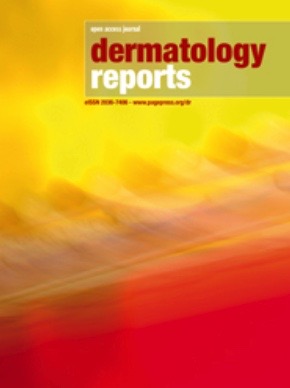Focal facial dermal dysplasia type IV: a case series
All claims expressed in this article are solely those of the authors and do not necessarily represent those of their affiliated organizations, or those of the publisher, the editors and the reviewers. Any product that may be evaluated in this article or claim that may be made by its manufacturer is not guaranteed or endorsed by the publisher.
Authors
Focal facial dermal dysplasias (FFDDs) encompass four rare inherited disorders. FFDD types I, II, and III are characterized by bitemporal scar-like lesions present from birth, while FFDD IV is identified by analogous lesions localized in the periauricular area. Most FFDD IV cases show autosomal-recessive inheritance with mutations in the CYP26C1 gene. We describe three newborns with bilateral, oval-shaped, hypopigmented preauricular lesions indicative of FFDD IV. It is crucial for physicians to recognize these rare conditions at an early stage to ensure proper diagnosis and to rule out associated malformations.
Pediatric Dermatology Regional Center, Department of Women’s and Children’s Health, University of Padua; Soft-Tissue, Peritoneum and Melanoma Surgical Oncology Unit, Veneto Institute of Oncology IOV - IRCCS, Padua, Italy.
Pediatric Dermatology Regional Center, Department of Women’s and Children’s Health, University of Padua, Italy.
How to Cite

This work is licensed under a Creative Commons Attribution-NonCommercial 4.0 International License.








